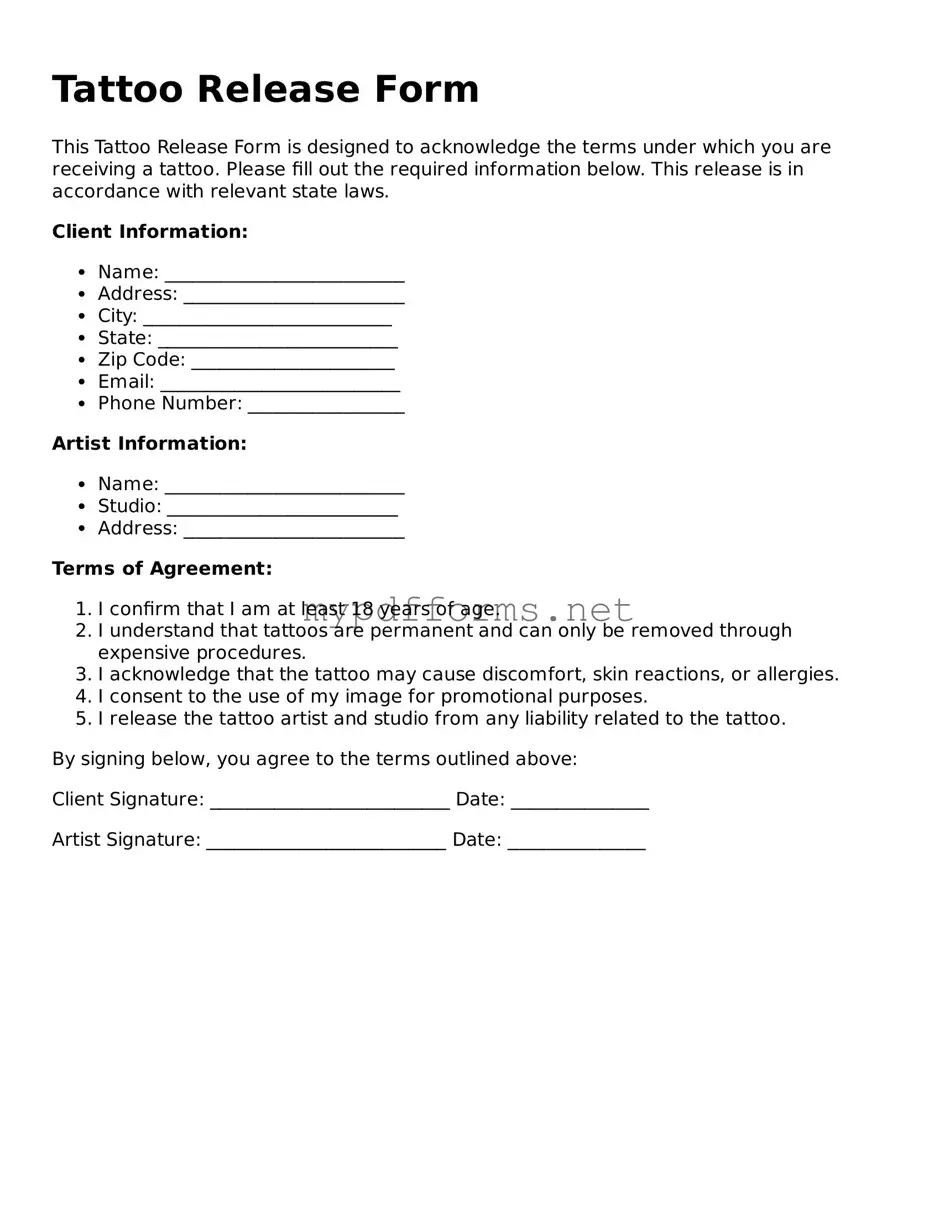The Tattoo Release form shares similarities with a Photography Release form. Both documents serve to obtain permission from individuals to use their likeness for promotional or commercial purposes. In the case of a Photography Release, the subject grants the photographer rights to use their image in various media. This ensures that the photographer can legally showcase their work without fear of legal repercussions. Like the Tattoo Release, it protects the creator's interests while respecting the individual's rights.
Another document akin to the Tattoo Release form is the Model Release form. This form is often used in the fashion and advertising industries. It allows photographers and companies to use the images of models for marketing and promotional activities. Similar to the Tattoo Release, the Model Release provides legal protection by ensuring that the model agrees to the use of their image, thus preventing potential disputes over image rights in the future.
The Consent to Treat form is also comparable to the Tattoo Release form. This document is commonly used in medical settings, where patients give consent for medical procedures or treatments. Both forms require individuals to acknowledge and accept the risks involved. In the case of the Tattoo Release, the individual accepts the potential risks associated with getting a tattoo, while the Consent to Treat form addresses the risks linked to medical procedures.
The Waiver of Liability is another document that shares characteristics with the Tattoo Release form. This waiver is often used in activities that involve a degree of risk, such as sports or adventure activities. By signing this document, participants acknowledge the risks and agree not to hold the organizers liable for any injuries. Similarly, the Tattoo Release form informs individuals about the potential risks of getting a tattoo and protects the tattoo artist from liability claims.
A Release of Information form is also similar in nature to the Tattoo Release. This document is used to authorize the sharing of personal information, often in medical or legal contexts. Both forms require individuals to provide explicit consent for their information or likeness to be used. The Tattoo Release allows artists to use images of the tattooed individual, while the Release of Information form permits the sharing of personal data with third parties.
The Non-Disclosure Agreement (NDA) bears some resemblance to the Tattoo Release form as well. An NDA is a legally binding contract that prevents parties from disclosing confidential information. While the Tattoo Release focuses on the use of an individual's image, both documents emphasize the importance of consent and confidentiality. The NDA protects sensitive information, while the Tattoo Release safeguards the artist's creative work and the individual's rights.
The Tattoo Release Form is quite similar to a Photography Release Form. Both documents serve to give permission to use an individual's likeness, be it through a tattoo or photograph, for various purposes such as marketing or promotion. They ensure that the creator or photographer does not face legal repercussions for using images featuring the individual. Essentially, these forms free the artist or photographer from any future claims by the subject, thereby providing clarity towards ownership and usage rights. For more information, you might find the resources at usalawdocs.com/ helpful.
Lastly, the Event Release form is comparable to the Tattoo Release form. This document is often used at events where photography or videography takes place. Participants grant permission for their images to be captured and used in promotional materials. Like the Tattoo Release, the Event Release ensures that individuals are aware of how their likeness may be used, providing a layer of protection for both the event organizers and the participants.
